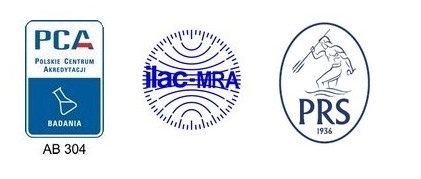Zachodniopomorski Uniwersytet Technologiczny w Szczecinie
General requirements
Test specimens should represent the actual application system with the undercoat and the method of their fastening. Materials and their compositions should be tested on nominal thickness (using their total thickness). In the case of materials and compositions with a thickness greater than the normative restrictions, cut off sufficient material from the side not exposed so that the thickness of the sample is reduced to the dimensions specified by the standard.
(eg: for floors, the thickness of the sample and the underlay should not exceed 60 mm).
In the case of textile floor coverings, should be prepared for testing two sets of samples : one taken along the direction of the manufacture; second transverse to this direction.
General rules for the selection of undercoats for samples
Normative requirement - test samples should represent the actual application system with the undercoat and the method of fixing, inclusive - in practice, it means multiple tests of the same material for each actual system; to limit the number of tests, standard undercoat were introduced: flammable and nonflammable [1]. Choice of standard undercoat to be used in tests should be based on the anticipated application of the test results in real systems.
The method of assembly to the substrate (eg gluing) should be representative of the actual conditions, if in practice different glues are used, speciments for testing should be prepared for each glue or tests without gluing to the undercoat.
Therefore, it is necessary to specify in the test order the purpose of the material and the conditions of its construction.
Additional requirements for non-flammability test materials (Euroclass A1 and A2)
Method of making samples from these materials has a significant influence on the test results. The positioning of flammable layers in relation to the furnace thermocouple also influences the results. Therefore for testing these products, detailed arrangements are necessary for the collection and preparation of samples in order to obtain comparable and satisfactory reproducible results.
For multi-layer (inhomogeneous) materials / products, each layer is tested separately.
Additional requirements for tests of upholstery sets
Flammability testing of upholstered furniture consists in the impact of small ignition source on samples corresponding to the actual upholstery system and observation of the effects of this impact. All components of the upholstery system should be provided with the description of the order of occurrence. This allows to prepare for the tests, in a stylized form, the layout found in a given chair.
It is also necessary to indicate the mass fraction of individual components in the upholstery set of product, which is necessary to prepare representative samples for toxicity tests of thermal decomposition products and combustion of upholstery set.
